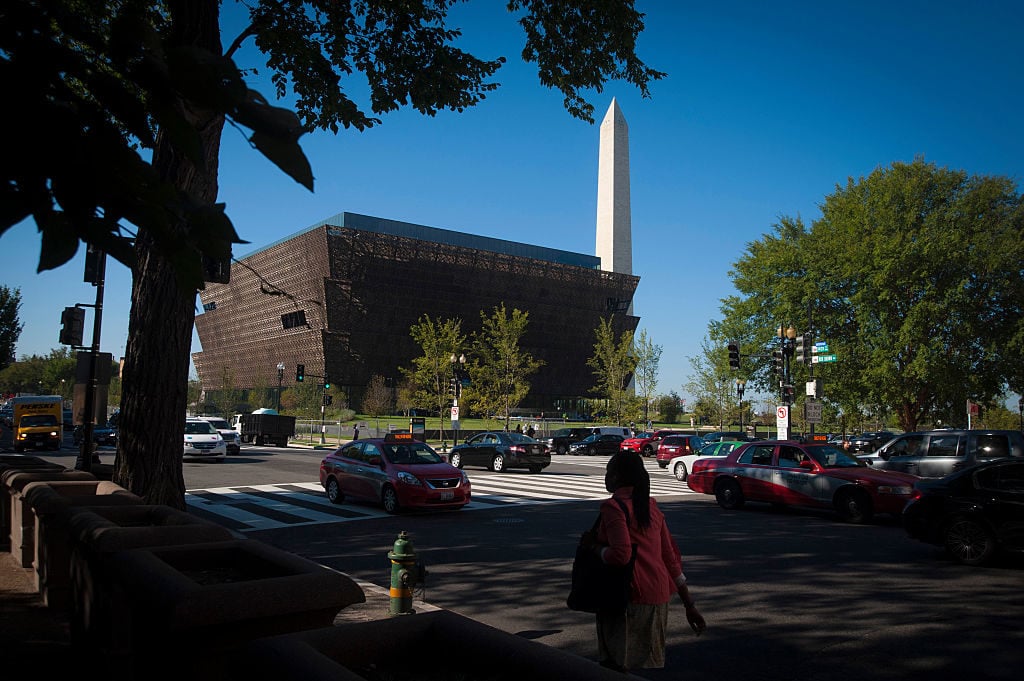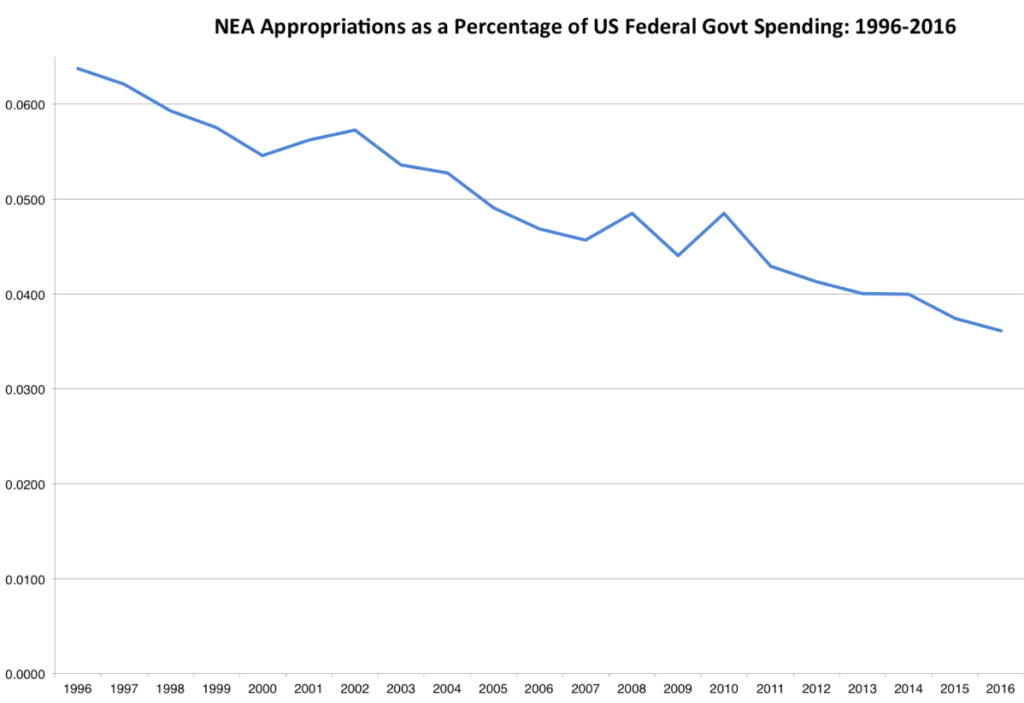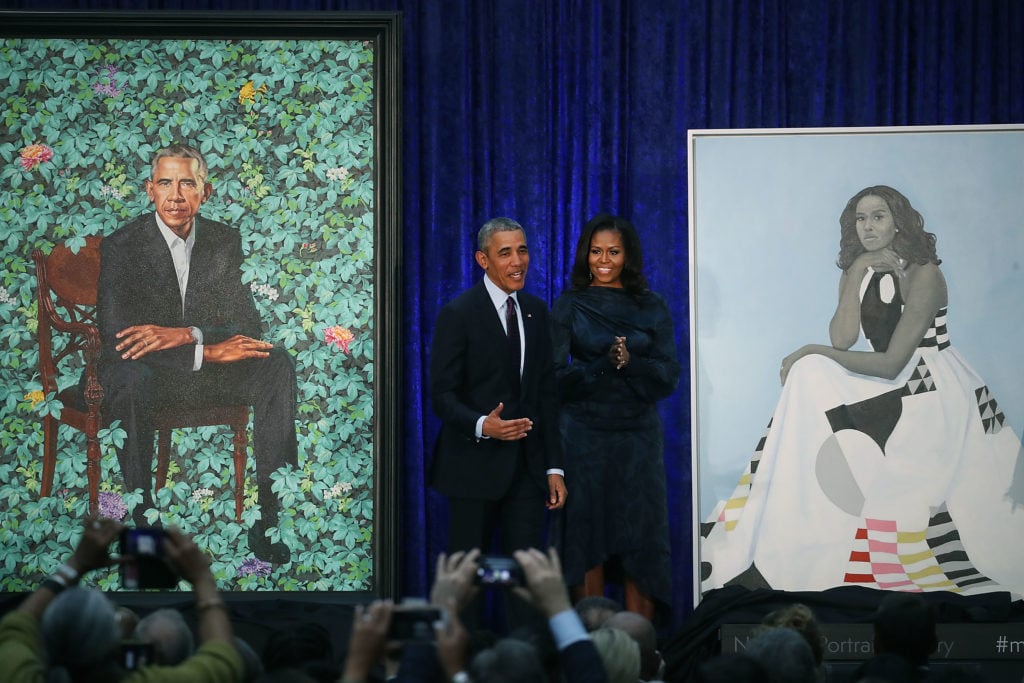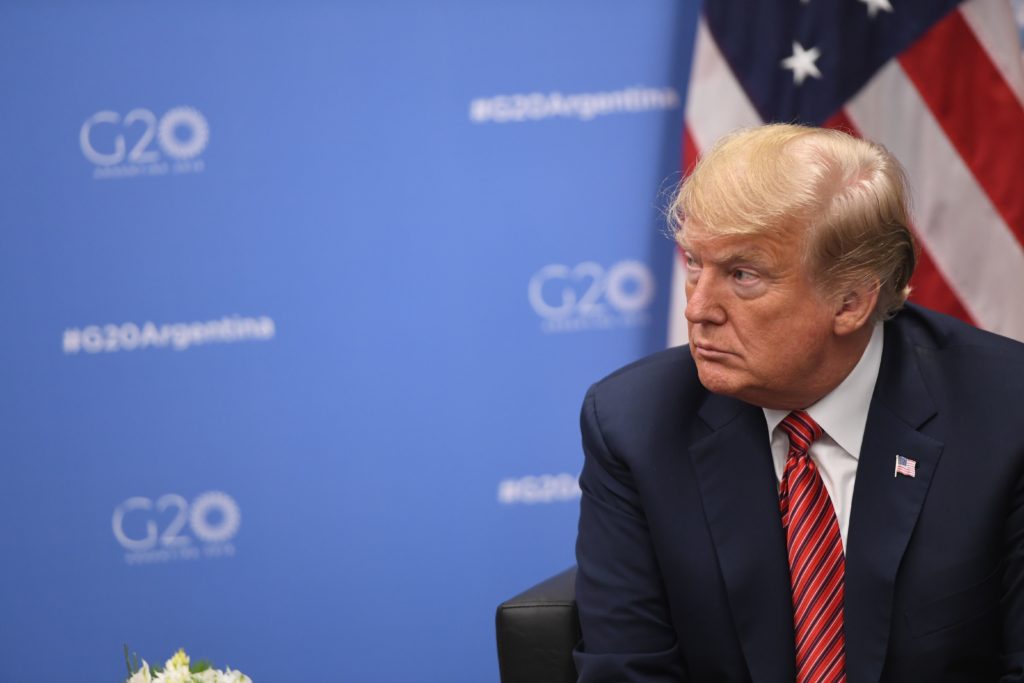Every Monday morning, artnet News brings you The Gray Market. The column decodes important stories from the previous week—and offers unparalleled insight into the inner workings of the art industry in the process.
This week, triangulating the arts’ place within the biggest political story of the year…
BACK TO BUSINESS
On Friday, President Donald Trump announced he would temporarily reopen the federal government through February 15 while he and various Congressional factions continue their cold war over billions of dollars in funding for a pointless border wall. (The surprise move certainly had nothing to do with longtime Trump adviser, self-proclaimed “dirty trickster,” and Richard-Nixon-back-tattoo-getter Roger Stone being arrested by the FBI that morning.) This means that the Smithsonian, the National Zoo, and the National Gallery of Art will be back in business starting Tuesday morning—the first time any of the above will return to operation since January 3.
All of this is good news. I just think it’s worthwhile to keep in mind how little it means for American federal investment in the arts.

The Smithsonian’s National Museum of African American History and Culture in Washington, DC. Photo by Preston Keres/AFP/Getty Images.
The Washington Post reports that the many institutions comprising the Smithsonian collectively forfeited about $1.5 million during the shutdown’s opening 10 days. In an op-ed on Tuesday, Smithsonian secretary David J. Skorton also expanded the picture of the damage by writing the following about what transpired in the standoff’s succeeding 24 days:
The closure of restaurants, shops, IMAX theaters and other operations is costing the Smithsonian approximately $1 million in revenue each week. These losses are not recoverable. They will have a lasting effect on our budget for this fiscal year. And that effect grows each day.
It’s important to understand that the Smithsonian’s losses came despite its diversification beyond total dependence on government funding. Skorton points out that the Smithsonian “is the very exemplar of a public/private partnership” whose $1.4 billion annual budget synthesizes “federal support, philanthropy, and revenue from retail operations.” Yet in the absence of government funding, this hybrid model was not enough to keep the institution’s doors open for more than a week and a half after the federal shutdown began on December 22.
Notably, most, if not all, public cultural institutions adopted a similar hybrid model long ago. And this delicate alliance between public largesse, private philanthropy, and commercial enterprise becomes even shakier if museum leaders want to avoid handing over too much autonomy to their biggest donors, who have proven willing to drive increasingly hard bargains for their generosity—and, in particular, their gifts of artwork—over the past several years.
For instance, in 2015, the Art Institute of Chicago accepted $500 million worth of blue-chip works from mega-collectors Stefan Edlis and Gael Neeson—but it had to promise to keep the entire gift on view for 50 years, effectively allowing the couple to curate a core component of its collection for decades. Meanwhile, according to the San Francisco Chronicle’s Charles Desmarais, “something like 60 percent of SFMOMA’s indoor galleries (not counting free-admission areas that serve as combination lobby and exhibition spaces) must always adhere—or, at least, respond—to” works from the collection of uber-donors Donald and Doris Fisher until at least 2116 (note: not a typo), thanks to what the museum called an “unprecedented collaboration” hammered out in 2009.
And we are in store for a lot more of these envelope-pushing pacts based on Washington trend lines that began well before the federal shutdown.

The United States Capitol in Washington, D.C. Photo courtesy of Wikimedia Commons.
PRIVATE PARTY
For decades in the US, federal funding for the arts has been in worse retreat than the two-martini business lunch—and despite what art-world liberals like myself often like to think, partisan politics seems to have little to do with it.
As I charted during Trump’s first idle threat to eliminate the National Endowment for the Arts, NEA funding as a share of total government spending demon-dropped 44 percent in the 20 years before the Donald took office—a figure all the more stomach-knotting when you consider that, at its 1996 peak in my sample period, the NEA still only received a microscopic 0.064 percent of the total federal budget. As a reminder, those 20 years covered the second Bill Clinton administration, two terms of George W. Bush, and both Obama administrations, while Congressional control flip-flopped between Republicans and Democrats.

Now, it’s true that the NEA isn’t the federal government’s only repository for cultural spending. For instance, there’s also the National Endowment for the Humanities. But even if you combined the NEA and NEH in 2017, their aggregate budget of $300 million still sat an order of magnitude below the record $3.2 billion France allotted its Ministry of Culture the same year. Imperfect as the comparison may be, then, it’s still indicative of a pronounced split in national priorities.
In fact, it’s plausible that Americans’ biggest annual fiscal commitment to the arts now comes in the form of tax breaks given to their wealthiest countrymen—a point made to me by a savvy audience member during the Q&A for a panel I moderated at the Talking Galleries symposium last Monday.
This wasn’t always the case, of course. Amid the uproar over freshman Congresswoman Alexandria Ocasio-Cortez’s recent proposal to institute a marginal tax rate of 70 to 80 percent for the highest-earning Americans, critics have forgotten (or conveniently ignored) that the US actually instituted this policy “for 35 years after World War II—including the most successful period of economic growth in our history,” according to Paul Krugman.
Incidentally, if you wanted to argue that such mandatory sacrifice from the elites kneecapped the country’s art scene, you’ll need so much luck on your side that I hope you’re wearing a Babybjörn containing a leprechaun. For the first time, works by American artists became a major cultural export to Europe during those 35 years, and a small sampling of noteworthy institutions founded stateside includes the Menil Foundation (1954), the Museum of Contemporary Art, Chicago (1967), the Studio Museum in Harlem (1968), the New Museum (1977), and the Museum of Contemporary Art, Los Angeles (1979).
As I’ve written before (including very recently), a sharp fall in public funding for cultural organizations since the 1980s has coincided with a sharp rise in private wealth held by the very few. And rather than being some wacky coincidence, these developments have a direct causal relationship, as many elites have spent billions of dollars on think tanks, lobbying firms, and politicians to enact policies that keepsafe mountains of revenue that once went to public causes, including arts and cultural institutions.

Former US President Barack Obama and former first lady Michelle Obama stand next to their newly unveiled portraits during a ceremony at the Smithsonian’s National Portrait Gallery, on February 12, 2018 in Washington, DC. Photo courtesy of Mark Wilson/Getty Images.
THE METRIC SYSTEM
It would be bad enough that the very wealthy have used this cold cost-benefit analysis to justify the piratic taking glossed over by megawatt giving. But with years of unprecedented federal incompetence now convincing the public that business leaders are our last hope, the same frigid economic calculus is increasingly being used to evaluate the arts, even in the nonprofit realm. Which means that culture is being asked to prove its value in measurable terms.
Hence, free public triennials still release economic impact reports, and Big Tech-allied reformers advocate expanding STEM education (science, technology, engineering, and math) to include the arts largely because artists can help make startups and products better. Even many of my peers’ favorite president took an unprovoked shot at the pursuit of cultural excellence for its own sake because “folks can make a lot more, potentially, with skilled manufacturing or the trades than they might with an art history degree.” (He later apologized—and was predictably drilled for doing so by zero-sum Republicans like Marco Rubio, who, as a reminder, keeps a “faux-precious sword from a ‘mystical warrior’” on the wall of his congressional office.)
Even Big Philanthropy—meaning, the cloud city of mega-donors with the most cash to distribute—is increasingly using metrics to govern giving in the arts and elsewhere. Just look at how the famously quant-driven Michael Bloomberg has integrated data evaluation into his more than $100 million Arts Innovation and Management program. Many other elite donors, particularly those from Wall Street and Silicon Valley, similarly prioritize measurable returns in their nonprofit decision-making. After all, it worked in their professional lives. Why not in their philanthropic ones, too?
By no means am I saying we should treat these donors as if they’re chalking out pentagrams and kidnapping virgins for some black mass. But their efforts further mash the accelerator on the industrialization of arts and culture in the one sphere where the route doesn’t always need to be dictated by quantifiable goals. Sometimes, creative pursuits should have no other endgame than unguided exploration and unimagined possibilities. To quote Willem de Kooning, the important thing about art is that it’s useless.
Arts nonprofits are, and have always been, fraught with complications when it comes to funding. Still, there is a meaningful difference between reckoning with the eternal complications of patronage and expecting the arts to pay for themselves like a sensible loan, or produce one-to-one productivity benefits like vocational training. But in a society where quid-pro-quo frameworks dictate an ever-climbing proportion of what businesses, philanthropists, and even governments do, rehabilitating American arts funding will take a grander re-evaluation of priorities than anything Washington is capable of by February 15.
[The Washington Post]
That’s all for this week. ‘Til next time, remember the famous Greek misattribution: As a person or as a nation, we are what we repeatedly do.










